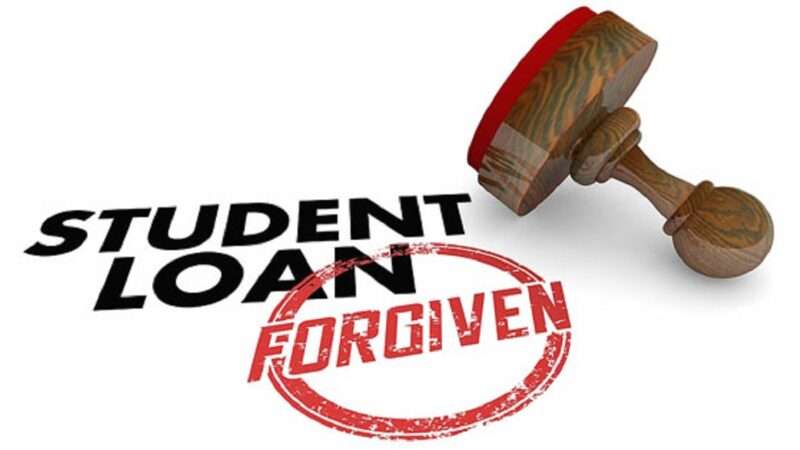

Most of the attention devoted to yesterday's student loan decisions has understandably focused on Biden v. Nebraska, the case in which the Supreme Court ruled the Biden Administration's $400 billion student loan forgiveness program is illegal (I gave my views on that case here). But it's worth giving at least a little consideration to the other loan forgiveness case the Supreme Court decided yesterday: Department of Education v. Brown.
The plaintiffs in that case had a very dubious theory of standing, and the Court unanimously rejected it, in an opinion written by Justice Alito. But it looks like those plaintiffs may end up getting what they wanted, nonetheless.
Unlike virtually everyone else challenging the loan forgiveness program in court, Myra Brown and Alexander Taylor (represented by the conservative Job Creators Network) argued not that the Biden program went too far, but that it wasn't generous enough. Specifically, they wanted a program that would give them more relief than they were eligible for under the Biden plan based on the HEROES Act of 2003. Brown and Taylor also complained that the Biden Administration had not conducted a notice and comment rulemaking procedure in which they would have had a chance to express their concerns and urge the administration to adopt a more expansive plan.
They hoped that, if the HEROES Act plan were struck down, the administration would go back to the drawing board, go through the notice and comment process, and enact a more generous plan under the Higher Education Act of 1965. Even many observers sympathetic to the substantive case against the Biden plan (myself included) believed the Brown standing theory was too speculative to pass muster under current Supreme Court standing precedent. The Supreme Court agreed:
Describing respondents' claim illustrates how unusual it is. They claim they are injured because the Government has not adopted a lawful benefits program under which they would qualify for assistance. But the same could be said of anyone who might benefit from a benefits program that the Government has not chosen to adopt…
At the outset, we reiterate what respondents' claim is not. Respondents are not claiming that they are injured by not being included in the Plan (or, in Taylor's case, by being remunerated by the Plan less generously than he thinks himself entitled to). After all, they think the Plan is substantively unlawful….
Instead, respondents seek relief under a separate statutory source. They name the [Higher Education Act] as that potential source…
The Plan, however, is independent of any student-loan relief the Department might craft under the HEA (or any other statute). A decision by this Court that the Plan is lawful would have no effect on the Department's ability to forgive respondents' loans under the HEA… Thus, the Plan poses no legal obstacle to the Department's choosing to find other ways to remedy the harm respondents experience from not having their loans forgiven. Put differently, the Department's decision to give other people relief under a different statutory scheme did not cause respondents not to obtain the benefits they want.
Justice Alito goes on to say that the adoption of the HEROES Act plan therefore did not cause the plaintiffs' injury in any way, and that any claim that striking down that plan would lead the administration to pursue notice and comment rulemaking and adopt a more generous plan under the HEA is too speculative to justify standing.
All of this makes sense under current Supreme Court standing precedent. Unless you want to simply get rid of all or most current standing requirements (as I do), Brown and Taylor deserved to lose on standing.
But the Brown plaintiffs' logic turns out to be politically valid, even if it was wrong legally. In the aftermath of yesterday's rulings, President Biden announced that he will indeed seek to enact a new loan forgiveness plan under the Higher Education Act of 1965. And the Department of Education is apparently going to go through the notice and comment rule-making process! Brown and Taylor (and others) will be free to file comments urging a more generous plan.
Had the Supreme Court upheld the HEROES Act plan, it is unlikely any of these events would have happened. At least for now, Biden would probably just have stuck to the existing plan.
Thus, Brown and Taylor ended up getting much of what they wanted. Indeed, they may have done so more fully than almost anyone else involved in the loan forgiveness litigation. Most of the other participants either wanted the HEROES Act plan upheld, or wanted it struck down and not replaced with another plan of similar or larger scale.
Of course, it is not certain that the Administration's new HEA plan will give Brown and Taylor more than they would have gotten under the HEROES Act plan. And it is also far from certain that an HEA loan forgiveness plan would fare any better in Court than the Administration's previous plan did (I think the HEA rationale for mass loan forgiveness has serious flaws).
But Brown and Taylor will at least now get the notice and comment opportunity they say they want. They also now have a fighting chance at getting more generous student loan forgiveness. Not a bad showing for litigants whose case was unanimously dismissed by the Supreme Court!
The post The Irony of Department of Education v. Brown—the Other Student Loan Forgiveness Case Decided by the Supreme Court Yesterday appeared first on Reason.com.







